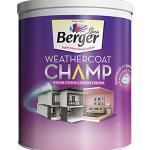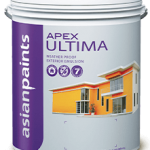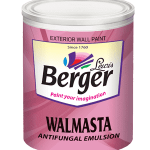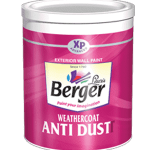What is Primer, Should it be used before painting and its Difference.

What is Primer:
Priming walls can appear to be a further step in the process, but the advantages are far greater than extra work, different types of primer are used for different surfaces and purpose. Consider the paint base as a foundation that forms the basis for a perfect paint job. In order to protect your paint from wear over the years, the cutting down of your number of coats is actually facilitating your work in the long run. And regardless of your level of skill, with a wall first, you can achieve a professional finish.
The first coat is essentially a coat that is applied to provide additional stability before painting, which ensures better adhesion and increased durability of the material. It is also known as a preparatory cover before coatings. It can only be used as the undercoating, not as paint, with its qualities being taken into account. If we look, wood requires primary coating before colouring, the porous materials such as cement. A primer consists of resins, solvents, and certain additives. In some, polyethene may also be present. We are also going to learn the different types of primer and the use of different types of primer below.
Composition:
A primer consists of 20–30% synthetic resin, 60–80% solvent and 2–5% additive agent. Some primer contains polyethene (plastic), for better durability.
What Does Primer Do:
- Covers imperfections such as parchments or repairs of your wall areas.
- Blocks and dissimulates stains to prevent them from bleeding through your newer finish.
- Provides your paint to stick on a uniform surface. (Long-lasting work of the paint = improved adhesion.)
- Create a standard basis for a smooth application of seamless colours, so that you can do the work with fewer coats.
- Neutralize the surface colour to ensure that the true brightest colour is visible when new paint is applied.
Benefits of a Primer Coat:
Primer is protection, adherence and durability equivalent. Why not apply it when you have all these qualities in a package? If not, you will have to enjoy your uneven paint peels as you sit on your sofa. The most important and basic function of the primary is to make the painting surface smoother.
Let us take an example to understand the work of the first. We dress up with gems when we dress up. The beauty and the grace of your carrying play a role. Jewellery In the same contrast, the jewellery is the same as the paint primary. First, the appearance of the wall improves after the paint adheres. Primer is a robust interface that makes the colour easily spreadable, providing a smoother look and consistent layer. The uneven appearance, lump on the wall, change of colour, brush marks, the blotchy look could be caused by not applying primers. Some of the different types of primer are mention below.
Different Types of Primer
Drywall Primer:
Drywall is extremely pore and soaks like a sponge, and makes it cover some areas better than others, in particular when comparing drywall mud joints with the area around it. The final lines of your paint called “flashing,” on porous surfaces like mud, will make you see visible differences.
In painting new drywall or over a drywall patch, it is always a good idea to use the first primary to achieve a consistent appearance with your final coat, and in addition, a quality drywall primer is typically significantly less costly per gallon than using multiple coats of quality interior latex layers.
Wood Primer:
Bare wood is one of the hardest substrates to adhere to for a paint topcoat. In the past, a good slow-drying oil base on naked wood had not been substituted. It takes a long time to dry so that he can soak into the wood and stick better than any other kind of wood primer.
Although the old oil primer is still the best one to use, no one wants to wait for a first to dry for 24 hours before they can top it. The paint companies have thus developed new, faster-drying technology, both in oil and latex products, which dries fast yet still helps to properly adhere to your paint topcoat.
We would always recommend a wood base if you did not feel like you were waiting for slow and dry weather and didn’t care about working with solvent clean-up products. It’s still worthwhile to use latex wood primers before applying your finishing coats if you’re not interested in these problems, but have to make paints on bare wood.
Masonry Primer:
It is a good idea to use masonry first before painting for several reasons.
Some surfaces in the masonry may have a high pH, which causes adhesion problems if you directly apply the paint to the surface. You can safely paint a quality masonry primer over a wider range of pH levels without the risk of loss of adhesion.
Another problem is called fluorescence; they are blurred, crystalline deposits that can be formed on every surface of masonry. Many maceration elements are resistant to blooms and are great at preventing them from becoming a problem.
For certain uses, there are several types of stain-blocking primers, but some are more common in the case of water and smoke stains/bleeding damage from blockage through the coat; the paint over pencils, marker or fats or the dramatic change in colour, particularly if a lighter colour is painted over a much darker colour.
Bonding Primer:
Certain surfaces are particularly “slender” to the best primers and present a unique challenge when trying to get a layer to adhere to them. Some instances include factory-coated metal reinforcements, ceramic tile, glass block, plastic, vinyl and high-gloss surfaces.
You are much more likely to have large adhesion of the finishing coat to the surface by choosing a proper bonding first for your application.
Is it required to use Primer before painting?
There are two main reasons to paint any surface. It enhances the beauty of the walls/structure while also protecting the structure’s surfaces. It is recommended that you use a primer before painting any surfaces. Some questions arise, such as why is primer necessary? Isn’t it possible to skip the primer and just apply one more coat of paint? The difference between the two is difficult to discern for a layperson because they appear to be identical.
While our paint is self-priming, for a professional-looking finish, we always recommend using a primer before your two coats of paint. Priming allows for the richest, most true-to-colour colour to show through. It’s what we refer to as the “ideal base for brilliant colour.” In most cases, one coat of primer should suffice, but in the following situations, two coats of primer are required:
- When you move from a taller to a lesser finish, like half-gloss to the eggshell.
- Turn from a dark to a lighter colour.
- If you’ve repaired or patched your walls.
- When painting a wet area like a bathroom, more likely to leach and mildew.
- If you want to block your wall with stains (like water spots from a bathroom leak or smoke damage from a fire in a kitchen).
- Unfinished wood decorations or other highly porous surfaces.
How many Primer coats do I need?
How much first you need depends on the material and condition of your wall When you use a paint primer on a wall and do not change finishes or make a drastic change in colour, the trick should be done with a coat. If you paint over a dark colour, a glossy paint or a porous surface, use two coats for optimal results.
Paint vs. Primer: What’s the Difference?
The first is paint, but it consists mainly of resins without pigments. The primers are designed to bond with the surface of the sub and paint to create a uniform surface suitable for paint reception.
The function of Primer:
Primer penetrates the porous surface to ensure better coating and adhesion. Primer scales the surface. It also hides imperfections and provides the paint with a uniform, smooth and stable basis. It provides good coverage with a problem solver.
Almost the main components of the paint remain equal to the base, plus the paints contain the colour pigments. Paints contain additives different from primers. These additives have different function, such as bonding and adhesion, fast-drying, durability, etc.
The function of Paint:
Paintings add surface colour and brilliance. They finish the surface and protect it. Pigments also hide the surfaces in paints. Many components are added to the paint to quickly dry and make the paint live, that is to say.
The paint can crack, pull off within a few months if it is applied to an unprinted surface. It is important that the surface with the right first is primed for the paint to last for longer periods.
Conclusion:
We understood by reading the above paragraph the different types of primer and the use of different types of primer. We can conclude from the above that primary material plays an important role in binding the wall with the paint or another material. Protect the material against natural aggravation. Why not follow a smoother way rather than jumping, which will cause many additional issues in future? Primer is usually available in white but may also be available in other natural colours. In fact, a neutral surface is provided. Before you go for coating, it is an excellent idea to select a primers coat. You will be guaranteed sustainability for the future when you decide to apply the primary. You have a licence to protect you now. We can call it also a Money saver pack at “Yes Painter” because it will save your money in years to come.






Leave A Comment